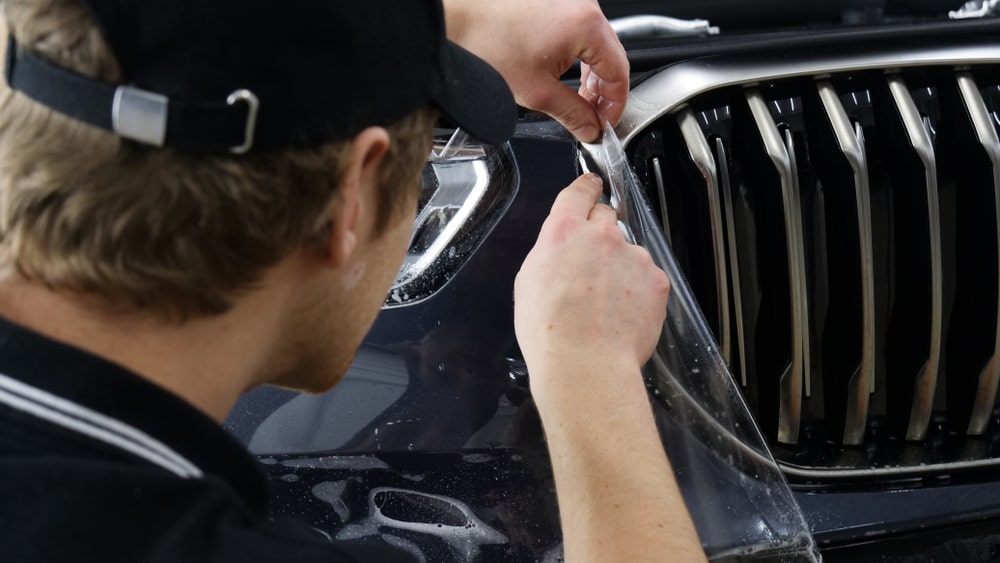LIumar Certified Installer and Dealer
LLumar® Paint Protection Film(PPF) offers breakthrough technology for paint protection applications using an advanced, self-healing, solvent-resistant clear coat formulation allowing for easy installation and increased longevity.
Properties of a Good Paint Protection Film
Self Healing Property
A quality paint protection film is made with a superior top coat which is close to 0.5 mil in size. This top coat comprises of special kind of polymers called elastomers. Scratches are usually visible on the surface of the PPF when the bond between the polymers breaks. In case of
elastomers, when treated with mild heat, the scratches isappear within seconds. If you fail to see scratches mitigate on application of mild heat, then the PPF is not a self-healing one and hence is not a quality PPF. Always test a sample of the PPF for self-healing properties before
making a decision to buy it.


Stain Resistance
Indian road condition and climate take a toll on the Paint Protection Film. We, generally, have our cars washed every day, and often multiple cars are washed with a single bucket of water and a dirty cloth. As a result, the PPF tends to go dull or yellow very quickly. A real good PPF should be able to resist the torture. Since stain resistance property cannot be checked immediately, one should look for the manufacturer’s warranty in writing and the
technical specifications for certain tests. The PPF should pass in tests against certain chemicals like IPA, Hexane, Heptane and Toluene, and stains due to transmission fluid, windshield washing fluid, motor oil, ketchup and mustard. The warranty should be for India and given as an official document from the company.
Optical Clarity And Glossiness
Paint Protection Film is an invisible protection. When applied it should
look like there is nothing applied at all. Only difference should be the
enhanced gloss of the OEM paint. Low quality PPFs will look dull and add
a texture like the surface of an orange, called orange peel effect. It gives
distorted reflection on the car surface. It is essential to check a sample of
the PPF installed properly on a piece of metal or a car’s bonnet. There
should no dullness, no orange peel effect and the gloss on the applied part
must be substantially higher


Installation Friendliness
Installation is key for Paint Protection Films. The finish depends on seamless
application. Some PPFs are extremely rigid and non-flexible, making it difficult for the applicator to conform the film on curved parts. Adhesive is the second critical factor. Cheap adhesives do not allow to move the film during installation for correct alignments. If the adhesive is too tacky, then lifting a piece becomes difficult and lines may appear, called scuff marks.
Impact Resistance And Strength
This is the most critical factor in choosing the right PPF. With advantages of self-healing, stain resistance, etc.
people tend to forget the primary benefit of a PPF – to protect the OEM paint from damage in minor accidents or
road mishaps. When the PPF is scratched by another passing vehicle, on removal of the film the paint underneath
should be as good as new. This is where impact resistance comes into play. Technical parameters to check this
property are Tensile Strength (should be around 5000 psi), Tear Strength (575 pli), Elongation At Break (>400%)
and weathering tests like QUV 2500h and Xenon 2500h

